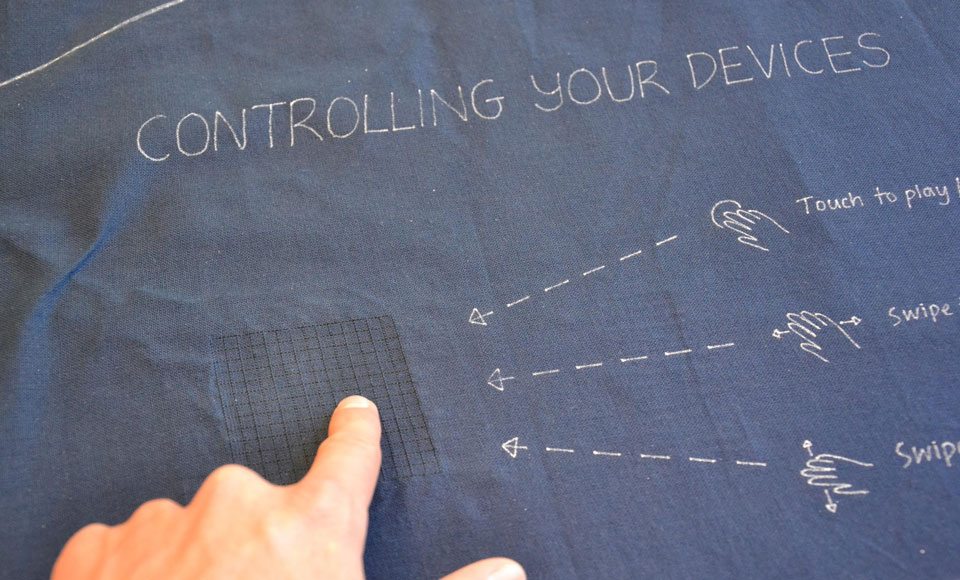Being locked out of the home or office may soon be an inconvenience of the past.
Computer scientists from the University of Washington have created fabrics which can now store data such as security codes and I.D tags without the need for any onboard electronics. The technology differentiates itself from a lot of today’s ‘smart fabrics’ like those from Google and Levi’s in that it doesn’t require any silicon chips or sensors to be weaved into the material.
The cutting edge invention which was showcased at the Association for Computing Machinery’s User Interface Software and Technology Symposium (UIST 2017) utilises the unique magnetic properties of a previously unexplored conductive thread that is readily available off the shelf.
Once woven into a garment such as a dress shirt or jacket, the data that is stored into the fabric can be read by an instrument embedded into a smartphone.
“This is a completely electronic-free design, which means you can iron the smart fabric or put it in the washer and dryer,” says senior author Shyam Gollakota, associate professor in the Paul G. Allen School of Computer Science & Engineering.
“You can think of the fabric as a hard disk – you’re actually doing this data storage on the clothes you’re wearing.”
Conductive thread isn’t exactly new technology with its properties previously employed in objects like talking stuffed toys to carry electrical current to lights, speakers and other mechanisms. What the researchers from the University of Washington did was look into the unknown magnetic properties of these conductive threads before manipulating them to store digital data or visual information such as letters or numbers.
This saved data can then be read by an equally-affordable magnometer which is designed to measure the strength of magnetic fields and can be found in most modern smartphones.
“We are using something that already exists on a smartphone and uses almost no power, so the cost of reading this type of data is negligible,” says Gollakota.
To test this technology the researchers stored a security passcode onto a piece of fabric sewn onto a shirt sleeve. This passcode would grant access to an electronically locked door and when the sleeve was waved over the magnometer, the door would unlock.
Once the experiment was proven, the researchers began testing the fabrics in an array of fashion items including ties, belts, a necklace, wrtistband and more. The results were the same with data being decoded with a swipe of a smartphone.
The hidden properties of the fabric which holds boundless potential for the future of fashion was discovered when researchers messed around with its magnetic poles that start out in random order. They then rubbed a secondary magnet against the fabric to physically align the poles (in positive or negative direction) to create the foundations for data storage – think the succession of 1s an 0s you’ve seen in hacker movies or random coding.
The only downside to the smart fabric is that it loses about 30 percent of its magnetisation over the duration of a week. This is no major issue though since the fabric can be “re-magnetised” anytime to re-install the data.
More importantly though the fabric held onto the data even after being thrown into the washing machine, dryer and ironing – a feat previously unattainable by existing smart fabrics which only work via on-board electronics and can be easily damaged against the normal wear and tear.
To top it all off, the researchers even developed a magnetic glove with the fabric which can control a smartphone in someone’s pocket.
“With this system, we can easily interact with smart devices without having to constantly take it out of our pockets,” explained lead author Justin Chan, an Allen School doctoral student.
From the experiments, the smartphone was able to recognise six gestures – left flick, right flick, upward swipe, downward swipe, click and back click – all with 90 percent accuracy. Moving forward with this, the researchers plan to develop the fabric with stronger magnetic fields which will enhance the storage capacity available.
